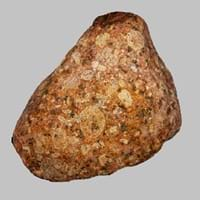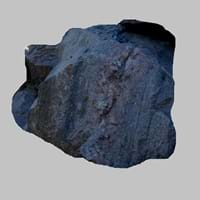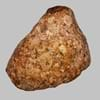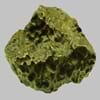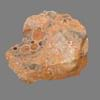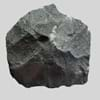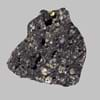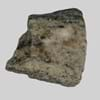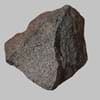Definition
Rapakivi Granite is a hornblende-biotite Granite containing large rounded crystals of orthoclase which are mantled with oligoclase
Blue Granite is an igneous rock and a variety of Larvikite, notable for the presence of thumbnail-sized blue crystals of feldspar
Origin
Finland, Europe
Unknown
Discoverer
Jakob Sederholm
Unknown
Etymology
From Finnish Rapakivi which stands for crumbly rock
From the color of rock, Blue
Class
Igneous Rocks
Igneous Rocks
Sub-Class
Durable Rock, Hard Rock
Durable Rock, Medium Hardness Rock
Other Categories
Coarse Grained Rock, Opaque Rock
Fine Grained Rock, Opaque Rock
Texture
Granular, Phaneritic
Phaneritic
Color
Black, Grey, Orange, Pink, White
Black, Brown, Light to Dark Grey, White
Durability
Durable
Durable
Scratch Resistant
Yes
Yes
Appearance
Veined or Pebbled
Shiny
Interior Uses
Bathrooms, Countertops, Decorative Aggregates, Entryways, Floor Tiles, Flooring, Homes, Hotels, Interior Decoration, Kitchens, Stair Treads
Decorative Aggregates, Floor Tiles, Flooring, Interior Decoration
Exterior Uses
As Building Stone, As Facing Stone, Office Buildings, Paving Stone, Resorts
As Building Stone, As Facing Stone, Paving Stone, Garden Decoration
Other Architectural Uses
Not Yet Used
Curbing
Construction Industry
As Dimension Stone
As Dimension Stone, Cement Manufacture, Construction Aggregate, for Road Aggregate
Medical Industry
Not Yet Used
Not Yet Used
Antiquity Uses
Artifacts, Monuments, Sculpture, Small Figurines
Artifacts, Monuments, Sculpture, Small Figurines
Commercial Uses
Cemetery Markers, Commemorative Tablets, Creating Artwork, Curling, Laboratory bench tops, Tombstones
Cemetery Markers, Commemorative Tablets, Creating Artwork, Curling
Types
Igneous Protolith Granite, Sedimentary Protolith Granite, Mantle Granite, Anorogenic Granite and Hybrid Granite
Not Available
Features
Available in Lots of Colors and Patterns, It is One of the Oldest, Strongest and Hardest Rock
Available in lots of colors, Is one of the oldest rock
Archaeological Significance
Famous Monuments
Data Not Available
Data Not Available
Famous Sculptures
Data Not Available
Data Not Available
Pictographs
Not Used
Not Used
Petroglyphs
Not Used
Not Used
Formation
Granite is an igneous rock which is very hard, crystalline and is visibly homogeneous in texture and forms by melting of continental rocks
Blue Granite is an igneous rock which is a variety of Larvikite and is known mainly for the presence of thumbnail-sized crystals of feldspar.
Mineral Content
Amphibole, Biotite, Feldspar, Hornblade, Micas, Muscovite or Illite, Plagioclase, Pyroxene, Quartz
Albite, Amphibole, Apatite, Biotite, Feldspar, Hornblade, Ilmenite, Magnetite, Muscovite or Illite, Olivine, Plagioclase, Pyroxene, Quartz, Sulfides, Titanite, Zircon
Compound Content
Aluminium Oxide, CaO, Iron(III) Oxide, FeO, Potassium Oxide, MgO, MnO, Sodium Oxide, Phosphorus Pentoxide, Silicon Dioxide, Titanium Dioxide
Aluminium Oxide, CaO, Iron(III) Oxide, FeO, Potassium Oxide, MgO, MnO, Sodium Oxide, Phosphorus Pentoxide, Silicon Dioxide, Titanium Dioxide
Types of Metamorphism
Burial Metamorphism, Cataclastic Metamorphism, Contact Metamorphism
Burial Metamorphism, Cataclastic Metamorphism
Types of Weathering
Biological Weathering, Chemical Weathering, Mechanical Weathering
Biological Weathering, Chemical Weathering
Types of Erosion
Chemical Erosion, Coastal Erosion, Water Erosion, Wind Erosion
Chemical Erosion, Coastal Erosion, Water Erosion
Grain Size
Large and Coarse Grained
Medium to Fine Coarse Grained
Fracture
Not Available
Not Available
Porosity
Less Porous
Less Porous
Luster
Dull to Grainy with Sporadic parts Pearly and Vitreous
Subvitreous to Dull
Cleavage
Not Available
Not Available
Toughness
Not Available
Not Available
Specific Gravity
2.6-2.7
2.8-3
Transparency
Opaque
Opaque
Density
2.6-2.8 g/cm3
2.9-2.91 g/cm3
Resistance
Heat Resistant, Wear Resistant
Heat Resistant, Impact Resistant, Pressure Resistant
Deposits in Eastern Continents
Asia
China, India, Iran, Saudi Arabia, Sri Lanka, Taiwan, Thailand, Turkey, Vietnam
Not Yet Found
Africa
Angola, Egypt, Madagascar, Namibia, Nigeria, South Africa
Not Yet Found
Europe
Austria, Belgium, Finland, France, Germany, Italy, Norway, Sardinia, Spain, Switzerland, The Czech Republic, Venezuela
Bulgaria, England, Germany, Norway, Romania, Switzerland
Others
Not Yet Found
Not Yet Found
Deposits in Western Continents
North America
Canada, USA
USA
South America
Not Yet Found
Argentina, Bolivia, Brazil, Chile, Colombia, Ecuador, Peru
Deposits in Oceania Continent
Australia
Not Yet Found
New South Wales, New Zealand, Queensland, South Australia, Western Australia
